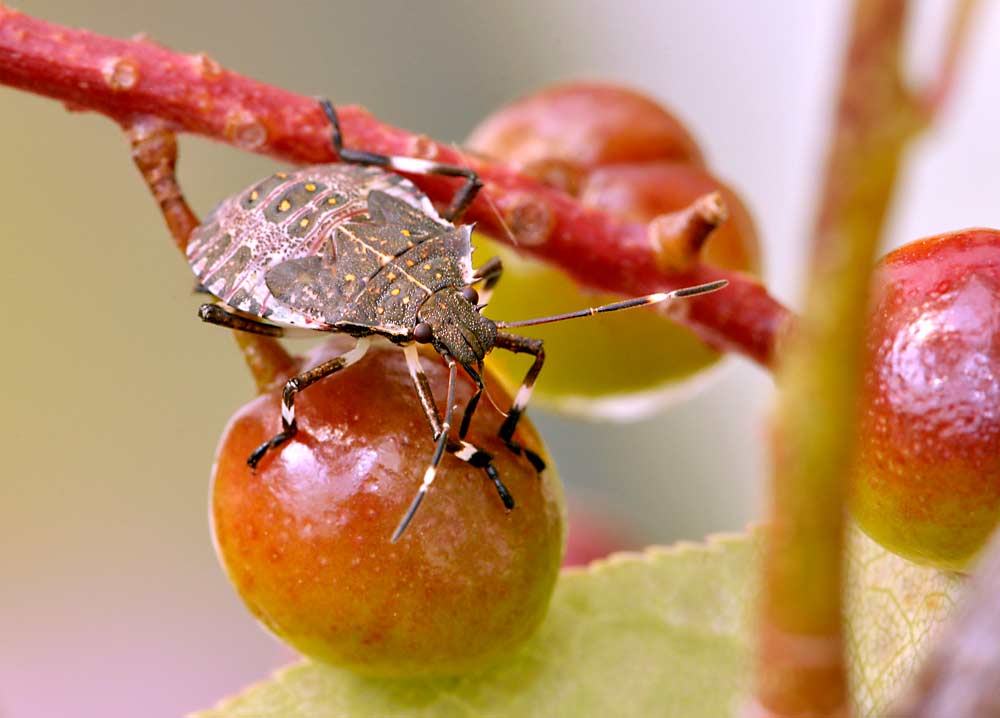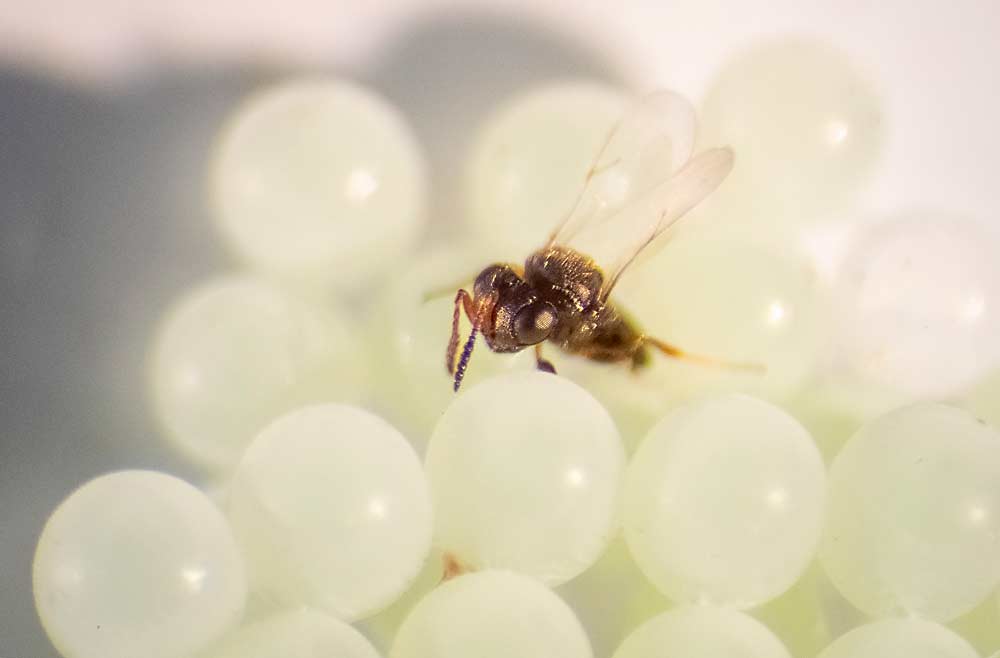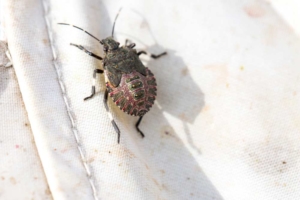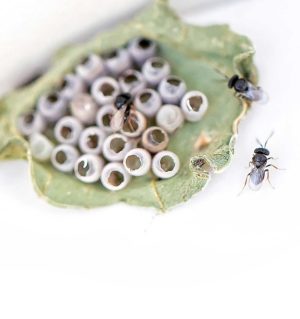
After three years of research, Washington State University entomologist Betsy Beers confirmed that while brown marmorated stink bugs can survive in Eastern Washington’s arid habitat, the invasive species doesn’t like it as much as the lush green Eastern U.S.
“If the climate is at the edge of its range, it’s not going to do as well,” Beers said.
It’s been more than 10 years since brown marmorated stink bug, or BMSB, overwhelmed mid-Atlantic environs, when evening news clips showed residents shoveling them from porches and hauling them away in buckets. So far, agricultural regions of Eastern Washington have avoided such a catastrophe, though the pest is around.
To test if the region’s shrub steppe habitat will keep the Asian native in check, Beers raised BMSB colonies from eggs to adults in isolated habitats with cuttings from backyard plants that would commonly be found in the East — maple, tree of heaven, catalpa — and compared their success to colonies with plants native to Eastern Washington — serviceberry, chokecherry, bitterbrush, currant, Oregon grape, elderberry, snowberry and wild rose.
By almost all measures, the Eastern diet led to larger, healthier bugs. Survivorship of nymphs to adults was twice as high. They reached adult stage in 42 days instead 49 or 50. And their adult weight was up to 15 percent heavier. Eastern-fed females laid more than twice as many eggs as the Western-fed females and lived much longer. Male survivorship was not affected by diet.
“In two years of studies, Washington’s native shrub-steppe plants as a diet for BMSB constituted a clear developmental penalty for nymphs reared on native plants in comparison to either a colony diet, or plants prevalent in the mid-Atlantic region,” Beers wrote in her final report for the Washington Tree Fruit Research Commission, which funded a portion of the $500,000 study. “Further, adults experienced substantial reductions in longevity and fecundity on the native diet. This appears to be a clear indication that without crop plants, BMSB will not build to high levels in unmanaged areas of Washington.”
That doesn’t mean the Washington tree fruit industry should drop its guard, Beers said. Even in less-than-ideal conditions, an invasive species can still cause economically significant damage.
When California cherry growers first documented the spotted wing drosophila, or SWD, entomologists used ecological niche models to map where they predicted the pest — also native to Asia — would take hold. Eastern Washington was not highlighted on those maps, but growers there know better today. The SWD made itself at home in orchard environments and causes cherry and stone fruit damage in that region.
“I’m trying not to make the same mistake again,” Beers said.
Here are a few other conclusions from Beers’ three-year BMSB project:
—Attract-and-kill stations “actually worked about as well as these behavioral types of controls are going to work,” Beers said. She hung insecticide-infused nets in trees baited with BMSB pheromone, which attracted and killed the BMSB around the perimeter of commercial orchards. Interior traps in those blocks indicated fewer bugs made it to the center of the orchard.
—Populations of the samurai wasp, a parasitoid wasp that specifically targets BMSB are flourishing near Vancouver, Washington, a forested southwestern region of the state, but Eastern Washington releases are struggling.
—The BMSB has established in 30 of Washington’s 39 counties, with populations clustered around the Interstate 5 corridor.
The samurai wasp

The work to introduce the samurai wasp and track its impact is continuing across the Pacific Northwest. Last year, Oregon State University researchers recovered 100 wasps at 2021 release sites, said Maggie Freeman, an OSU research assistant, at an early February grower meeting in Hood River, Oregon.
“That shows that these wasps successfully overwintered and are reproducing and spreading in the orchard,” Freeman said.
She is looking for more growers, especially those with orchards near forested land that can’t be sprayed, to host releases in 2023.
The wasp can parasitize native species of stink bugs; it affected the native spined soldier bug, also a predatory stink bug, in Beers’ trials. However, research from other parts of the country shows it prefers the BMSB, said Chris Adams, an OSU entomologist in Hood River.
Growers in the Hood River Valley, east of the Cascade Range but more verdant than Eastern Washington, have reported economic damage from BMSB, but so far, it’s nothing like the East Coast in 2010, Adams said.
He still considers the samurai wasp a host-specific parasitoid that will help with biological control. BMSB’s relatively slow development in the Pacific Northwest gives him even more hope.
“We have a window of opportunity to get the wasps out there faster than the stink bugs are getting there,” he said.
—by Ross Courtney








Leave A Comment